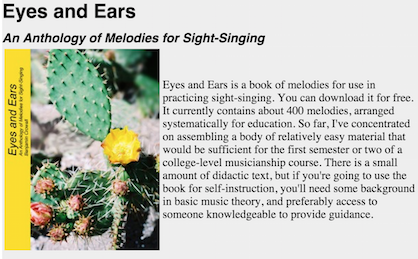Not Scales!
(do they make you feel like this?)
This is one of those topics that can be addressed by teachers and learners in so many different ways (or not at all), and the purpose of this week is not to learn how to drill patterns or how to memorise blocks of information, but to step back and become aware of another aspect of the mechanics of our musical language.
Scales are a requirement across many different platforms, specifically where examination or audition is concerned. Auditions for music colleges/conservatoires require candidates to play scales, graded music exams require scales across the different boards, whether the Associated Board of the Royal Schools of Music, TrinityGuildhall, Rockschool, or London College of Music (pages about scales are all linked). Why? What does it show and what does it do for the learner? …those are slightly rhetorical questions, but real questions are:
- How are scales presented?
- How does the learner engage with them?
- How does the learner understand them?
Scales shouldn’t be a dreaded learning routine – the sort of fitness plan that makes you feel like a dog on a treadmill. There is more to scales, and the resources and fundamental structures they afford us provide the musical minecraft blocks that we can use to form our worlds to share with others.
 It is essential to understand how they can be used to create.
It is essential to understand how they can be used to create.
photo CC licensed, source: http://bit.ly/1wRf9FX
Implied meaning
Whenever we hear anything, there are connections and there is an implied functionality, and whether right or wrong, it may be assumed in relation to what we already know. Below, at first glance I see either a towel or a curtain.
When we see (or hear) something, it may appear in a certain way, but are we aware of how it would be viewed in other systems or from another perspective?
 Photo CC licensed: http://bit.ly/1Dvhgkv
Photo CC licensed: http://bit.ly/1Dvhgkv
As an example, within the Indian musical systems there are very different understandings and conceptions of the function and construction of scales. That is not to say there are not connections and similarities, but the context is important.
says
“In the western world many people mistook it by thinking that raga is scale or just a tune or just a melody, but it is not actually that. It is more, because there are 10 scales in North Indian music, but several thousand ragas have been derived from these scales. So, scale is not all. It is said in our old Sanscrat language…. that means: that combination of notes that colours your mind, which brings out the emotions and feelings of your mind is called Rag. The word meaning of rag is colour. So it is not only some [?] combination of notes, but also there is some feelings and it must colour your mind or touch your heart. Not one single note, but also some combination of phrase or notes must touch your heart, so it is very difficult to define Raga.”
He goes on to explain the function of the different scale degrees and the understanding behind them. Set aside a half hour to listen to the full programme here:
(July 24, 1968)
There is a technical explanation in this book. It sets out some of the basics in a way that can be approached by someone who has little or no experience with the music of the Indian culture (link below). Especially read the first 40 pages, and then how much you delve in is up to you!
Some references to the scales, frameworks, and notation
- in Indian music: http://kksongs.org/music.html
- in Arabic music: http://maqamworld.com/
Have you considered the assumptions that go with the everyday music around you, in your own culture, and how this relates to learning on your instrument (including voice!)? For example, the ears you hear with are different than those of people in 1750, and the dissonances that we have come to expect as routine colourings within harmonies, would have been shocking. It is only because of the historical frameworks and assumptions within the function of notes within scales that we can listen in this way and understand as we do.
Task 3.1: find something that is assumed
Take a photo, describe, explain something that has been assumed- this doesn’t have to be musical at all. It could be anything. The most easily accessible examples are usually where there is a difference that has not been acknowledged or explained. Present the problem/example and what is the first reaction, and what needs to be known to really understand it.
How do we think about notes?
When moving from any one not to another, how do we understand it? Is it something we think of at all? Do you think in terms of melody and the musical line or in terms of a harmonic framework? Have a listen to this and pay attention to how you listen, how are you aware of the notes as they unfold? After the song is an analysis of the tune. Was any of that conscious to you while listening?
The experience of music and of the progression between notes within a melody can be like walking; it is a highly complex series of interrelated actions, most of which are so ingrained that we are completely unaware of the process. Saying that, it can be dangerous for a teacher to assume that the student ‘automatically’ understands and does indeed have a framework that is underpinning the way they play and listen.
Learning intervals?
The direct relationship of notes was put simply by someone teaching an 8 year old when she asked the child:
Is the next note a step or a skip?
…and that was the beginning: so simple and approachable.
When learning about the distance between notes, we have all sorts of gimmicks and tricks to help aid people’s memory …and understanding. Well, that’s the idea, but common ways of teaching intervals may have little to do with understanding the implied framework within a tonal system. I am sure that there will be at least one familiar song on this list that has been used to help you remember an interval. After all, we do make maps, remember patterns, and search for associative meaning.
However, this can have a negative impact on learning if not presented carefully….
Task 3.2: Working the tunes
- Choose a song that you have been taught, or that you use, to identify an interval and analyse it. -not the whole song, but the interval. What is the function of that interval in the song? Does it go from tonic to dominant? Is it beginning on the tonic? Does it have any relation to tonality or any specific context?
- Then give another example from within the repertoire for your instrument that uses the same interval in a different context.
- How can you bridge the gap from understanding the interval as learned in the song, to it’s wider application in general musical use?
Task 3.3: How do you hear it?
This task involves you exploring the scale in a different way. Many musicians who play melodic instruments do not experience intervals harmonically … First play from the root/tonic note of any scale in a melodic pattern that alternates every ascending note with the tonic: Do Re Do Me Do Fa Do Sol Do La Do Ti Do (bottom note) Do (top note)… and descend. Feel the intervals. Note down how you think and how it feels to go between the intervals- this will be different across instruments. Now play the intervals harmonically instead of melodically. This can be done two ways: If you play an instrument that does not require your breath, you can sing while you play. Hold the tonic (Do) with your voice, as a drone, while you slowly ascend the scale. Stay on each scale degree for a few seconds so you can really feel the character of that interval. (yes, you will have to breathe, but this can be done while holding a scale degree instead of between them- so you can maintain your pitch). If you play an instrument that requires your breath, you can still do this on your own, but will have to record yourself and it can be done either playing the drone or singing it. Of course you can do this with two people, and swap roles, so each has the chance to be the held note person.
Talk about the tasks. You don’t necessarily have to share the actual sounds (although they are interesting!) but reflect on the process…. label it Session 3 Task and tag it #MUS654
A learning resource:
This book is a very well thought out ear training resource that has been made from open sourced material and is FREE for everyone to use. I highly recommend it. This is from what the author says about it:
You can download the full book HERE
Many thanks to Ben Crowell for letting me share his book here!
Thinking as different musicians:
I had the pleasure of talking to composer and performer Jill Jarman about how she understands scales and the way in which we engage and instruct about these fundamental parts of our musical vocabulary. As a performer Jill began studying the piano, as taught by her father, as a toddler, and then went on to play the trumpet. She was inspired to come back to the piano as her main instrument, and all the while she composed. Jill jotted and made musical doodles throughout her childhood and has since studied extensively and composed for a wide range of events and ensembles. She has received numerous commissions in the past decade for specific works, solo, choral, big band, orchestra, concerti and she has composed for public concerts, corporate events, and private commissions. The following 20 minute interview was recorded as a reflection on some of our earlier conversations.
Listen to the interview with Jill Jarman here (20 mins- it jumps straight in!)
Reference links for you to follow up the interview:
- Jill referred to Bach’s Well-Tempered Klavier when she played the arpeggios. Here is the sheet music and a recording that scrolls with the music here (the first minute of the recording is NOT the piece, but background music while the manuscript dedication is presented and translated). And the music with the tune on top, as Ave Maria, sung by Maria Callas here.
- Messain limited modes of transposition printed and with details of how many different transpositions are possible (in brackets after each scale) here
- More from Jill Jarman on limited transposition involving polychords here (quite an interesting if complex read!)
- Stevie Wonder’s ‘Sunshine of my life’
- That inspiring boogie woogie book that made scales fun… here
As a way in to learning
Once we have scales, and patterns, they give us the tools to create and we move toward meaning. Keith Swanwick puts it well when he describes the move from individual tones to tunes that have expressive meaning and value in his book. This quote is from the ‘Tones hear as Tunes’ section which begins on p.15:
“Hearing sounds as music requires that we desist from giving attention to separate sounds and experience instead an illusion of movement, a sense of weight, space, time and flow. Normally we do this very easily, except when the music is very unusual for us or when we are required to listen in a pre-metaphorical mode, as when tuning or otherwise regulating an instrument. We can, of course, choose not to listen for ‘tunes’ and instead name single sounds, chords or intervals, as for instance when writing from dictation in a conventional aural training session. However, we cannot climb through this kind of technical analysis towards any sense of line or motion. Even when a wider view of aural discrimination is taken than pitch and rhythm materials (Pratt 1990), no amount of analytical skill with intervals, durations and timbres gets us to experience whole shapes. In fact it can divert us from hearing sounds as if they were lines and motion.
How tones become tunes depends to some extent on performance decisions, involving choice of speed, weight of sound, accentuation, balance between the various components and other elements of articulation. It also involves a particular interpretative stance on the part of the listener. …”
go on to read pp.16-20 here: Teaching Music Musically
There are many possibilities once the technical mastery has been achieved, and then the artist has the tools to construct and communicate in a way that can fit in with the traditions of the learned systems or that bends the rules to that individual’s whims.
Photo source: http://bit.ly/1reIQvN CC licensed
A Closing Task 3.4: Reflect on repertoire
Consider your own preferences and comfort zone within music. If you are a classical player, are you comfortable with modal systems? Vica-versa? Find examples that are particularly comfortable and fit like an old shoe. Can you pinpoint what sort of ear you have developed. Do you sit comfortably with the Conlon Nancarrow of the world or are you more of an Arvo Pärt, or Neil Young, or Mahler type? Describe your most comfortable musical shoes and have a go at why they fit you so well. What musical exposure and background made them fit… and how does that relate to the exposure you give to others, and particularly to your students?
I leave you with this classic… listen while thinking about the classic associations we make (and often teach) in Western music with major and minor. Enjoy!
Share your thoughts and your tasks! You can tweet your tasks and hashtag #MUS654 or you might want to post your thoughts on your own blog or website. … everyone is welcome, whether you contribute once or every week.




Pingback: Shuffle the deck: Scales becoming tunes #MUS654 - lauraritchie.com
Pingback: Scaling it up: Are scales more than a ladder? - lauraritchie.com
Pingback: On melody, meaning, & relationships of notes #MUS654 - lauraritchie.com
Pingback: Making learning scales tactile and meaningful - lauraritchie.com
Pingback: Scales: Order in the chaos? - lauraritchie.com
Pingback: Week 3 is here! #MUS654 - lauraritchie.com
Hey nice article…I found it because of the “polychords of limited transpositions”. I’ve been studying messiaen modes for several years.
regarding “songs to help you learn intervals”…
those can actually be detrimental and I’m a little surprised
its on the earmaster site.
The basic problem with these lists is they are inconsistent when trying to learn intervals within a tonal framework.
e.g. “NBC chimes” major 6th … true the interval is a major 6th, but the interval itself is between a 5th and the 3rd of an inverted major triad.
“here comes the bride” perfect 4th…again the interval is correct, but its between the 5th and 1st scale degrees.
“happy birthday to you” major 2nd … here we go again. interval correct but its between the 5th and 6th scale degrees.
This one messed me up when I was a kid (I’m not kidding):
“theme from love story” minor 6th … this is not a good example of minor 6th! the interval is between the third and 5th scale degrees of a minor scale.
bad stuff…sorry!
If you go through all the examples, you’ll see the intervals are correct, but the actual position relative to a tonal center shifts all over the place. This is the exact type of thing that will confuse people when they are trying to do ear training.
Thanks for the comment! That is exactly the problem with those songs, and so many teachers use them and pass the intervals on to students in that way without thinking about the relationships of the notes to their harmonic framework within those songs. It is encouraging that you have analysed their tonal content. It shows a committed level of awareness and understanding.
Thanks for taking the time to write and I am glad you found the page!